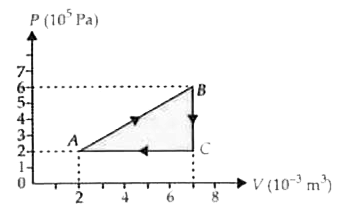Grass → insects → forg → birds → human.
Who gets minimum energy?
To determine who gets the minimum energy in the food chain: Grass → Insects → Frog → Birds → Human, we can follow these steps:
1. Understand the Energy Transfer: In an ecosystem, energy is transferred from one trophic level to the next. According to the 10% law of energy transfer, only about 10% of the energy from one level is passed on to the next level.
2. Assign Initial Energy to Grass: Let's assume the grass (the first trophic level) has an initial energy of 10,000 joules.
3. Calculate Energy for Each Trophic Level:
- Insects (2nd Trophic Level):
- Energy received = 10% of 10,000 joules = 1,000 joules.
- Frog (3rd Trophic Level):
- Energy received = 10% of 1,000 joules = 100 joules.
- Birds (4th Trophic Level):
- Energy received = 10% of 100 joules = 10 joules.
- Human (5th Trophic Level):
- Energy received = 10% of 10 joules = 1 joule.
4. Identify the Minimum Energy Receiver:
- From the calculations, we see that the energy received by each level is as follows:
- Grass: 10,000 joules
- Insects: 1,000 joules
- Frog: 100 joules
- Birds: 10 joules
- Human: 1 joule
- The human, being at the top of the food chain, receives the least energy, which is 1 joule.
5. Conclusion: Therefore, the organism that gets the minimum energy in this food chain is the Human.
- Insects (2nd Trophic Level):
- Energy received = 10% of 10,000 joules = 1,000 joules.
- Frog (3rd Trophic Level):
- Energy received = 10% of 1,000 joules = 100 joules.
- Birds (4th Trophic Level):
- Energy received = 10% of 100 joules = 10 joules.
- Human (5th Trophic Level):
- Energy received = 10% of 10 joules = 1 joule.
- From the calculations, we see that the energy received by each level is as follows:
- Grass: 10,000 joules
- Insects: 1,000 joules
- Frog: 100 joules
- Birds: 10 joules
- Human: 1 joule
- The human, being at the top of the food chain, receives the least energy, which is 1 joule.
Topper's Solved these Questions
Similar Questions
Knowledge Check
Dual of (p→q)→ r is
A(q→p)∧rBp→(q→r)C(p∨~q)∨rDnone of theseThe angle between vector (→A−→B) and (→B×→A) is :
A60∘B90∘C120∘D45∘The statement p→(q→p) is equivalent to
Ap→(p∨q)Bp→(p∧q)Cp→(p<→q)Dp→(p→q)
Phytoplanktons → Zooplanktons → Small fishes → Large fishes → Killer whales The population of smalI fishes will increase with
View Solution. The converse of p→(q→r) is
View SolutionA gas is taken through the cycle A→B→C→A, as shown. What is the net work done by the gas ?

View SolutionTwo food chains are shown. tree → aphid → insectivorous bird → bird of prey phytoplankton → zooplankton → plarikton-feeding fish → carnivorous fish Which diagram is a pyramid of energy representing both food chains?
View SolutionThe statement
(p→q)→p
is equivalent to
View Solution
